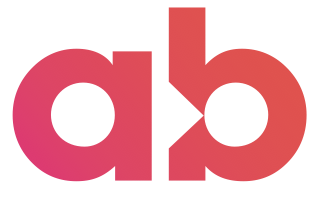Why diversity still belongs at the heart of high performance
Leadership Blog

Written by Achieve Breakthrough

In recent months, there’s been a noticeable shift in the conversation around diversity and inclusion (D&I). Some organisations are quietly scaling back their efforts. Others are questioning whether D&I should still command the same attention it has in recent years. But stepping away from diversity isn’t just short-sighted, it could be costly.
That’s because D&I have never been only about ethics. They’re about business performance too. If we want to build resilient, innovative organisations, capable of navigating complexity and unlocking real impact, then diversity isn’t optional. It’s critical.
Diversity isn’t a side project
We sometimes see conversations about diversity get parked in dedicated departments or meetings, as if it exists separate from the rest of the business. But if we’re serious about driving innovation, building exceptional teams and tackling big challenges, diversity needs to stay front and centre. That’s because performance and diversity aren’t two separate conversations. They’re the same one.
Lessons from the superchickens
This isn’t a new idea. Back in 2015, Margaret Heffernan helped popularise the work of evolutionary biologist William Muir, who studied how to breed more productive chickens.
Muir let an average flock live together for six generations. They thrived, growing steadily more productive over time.
But he also tried to create a ‘superflock’ by selecting only the most productive chickens. After six generations, almost all of them were dead. Their competitiveness had turned to aggression, leaving just three battered survivors.
While measuring human productivity isn’t as simple as counting eggs, many organisations have resonated with this story over the years. The message was simple: a model built on superstars and competition will collapse upon itself. It’s also to some extent the fate that awaits the non-diverse team. If we prioritise productivity over diversity, we may end up with neither.
What makes a team perform?
Heffernan offered an alternative, pointing to the work of researchers at MIT who made two separate studies of 699 people, each working in teams of two to five to complete a variety of simple and complex tasks.
The MIT researchers found that performance wasn’t the product of a combined high individual intelligence. Instead, the highest performing teams were distinguished by their social sensitivity, their equality of conversational turn-taking and, strikingly, the number of women in the group.
Why? The researchers didn’t draw a direct conclusion, but the message is clear: empathy, collaboration and connection create the conditions for teams to thrive. Diversity often fosters those conditions. And if we care about performance, those qualities matter just as much, if not more, than individual brilliance.
We can’t see what we can’t see
It sounds obvious, but it’s worth repeating. You can’t benefit from different perspectives if you only listen to your own.
And yet, many leaders unintentionally operate within their own frame of reference, shaped by their experiences, assumptions and worldview. Without noticing, they filter out perspectives that challenge their own.
That’s why we start every client project with context. We hope to leave clients with more empathy just by making them aware of their influences. Our aim is to loosen their relationship to their frame of reference so that they see the value of what lies outside it.
Innovation is often shaped by what we notice and experience ourselves. But this can limit us. Imagine if we hired more disabled designers to create our products. We wouldn’t just improve accessibility, we’d likely create better products for everyone. Diversity invites inclusive design and thinking, which is the kind of innovation we desperately need.
A bigger set of winning moves
You can’t artificially create diversity with flexibility of thought. But once a diverse collection of leaders are in the room, once they are at the decision table with you, then empathy is essential. With this in mind, we explore communication preferences with many of our clients, helping leaders to realise that they don’t listen and respond in the same way as others.
Everyone listens out for different elements in a conversation to respond to. And placed in a room with others, everyone has their own set of winning moves that makes them successful. But the minute that becomes your sole mode of operating, you can get stuck.
One senior executive we have coached tells people freely that one of their winning moves is to show up as the most compelling person in the room. It’s helped them to win sales opportunities, to inspire leaders and to prompt others to show up as their best selves too. But they also acknowledge that they have to be careful not to stay in that mode too long. At other times, a different approach is needed and maybe someone else’s winning move needs to take centre stage.
A diverse team will not only have a wider, truer perspective, it will have a wider selection of winning moves too. Which can only increase the team’s agility, enabling them to perform well in a variety of circumstances.
People drive performance
Businesses aren’t machines. Processes and structures matter, but it’s people who shape performance. And that’s what makes diversity essential. Not just as an ethical commitment, but as a strategic one.
It’s connection and empathy and a diversity of people that will raise our performance beyond what we’ve known. Diversity isn’t a trend to abandon. It’s a source of performance we can’t afford to ignore. You can’t engineer a superstar team. But you can build a diverse one.
Get in touch to explore how we can help you ignite your ambitions.
Published 09/04/2025
Subscribe by Email
Achieve more breakthroughs. Get expert leadership ideas, insights and advice straight to your inbox every Saturday, as well as the occasional bit of news on us, such as offers and invitations to participate in things like events, webinars and surveys. Read. Lead. Breakthrough.
Related posts
Leadership Blog
Leadership burnout: Expanding bandwidth to thrive through complexity
Achieve Breakthrough | 16/12/2025
Leadership Blog
What triggers you as a leader, and how to work with it?
Achieve Breakthrough | 09/12/2025
Leadership Blog
Why it’s impossible to lead with one foot still in your old role
Achieve Breakthrough | 03/12/2025
Leadership Blog
Why a leader’s true value lies in what they enable, not just what they know
Achieve Breakthrough | 25/11/2025
